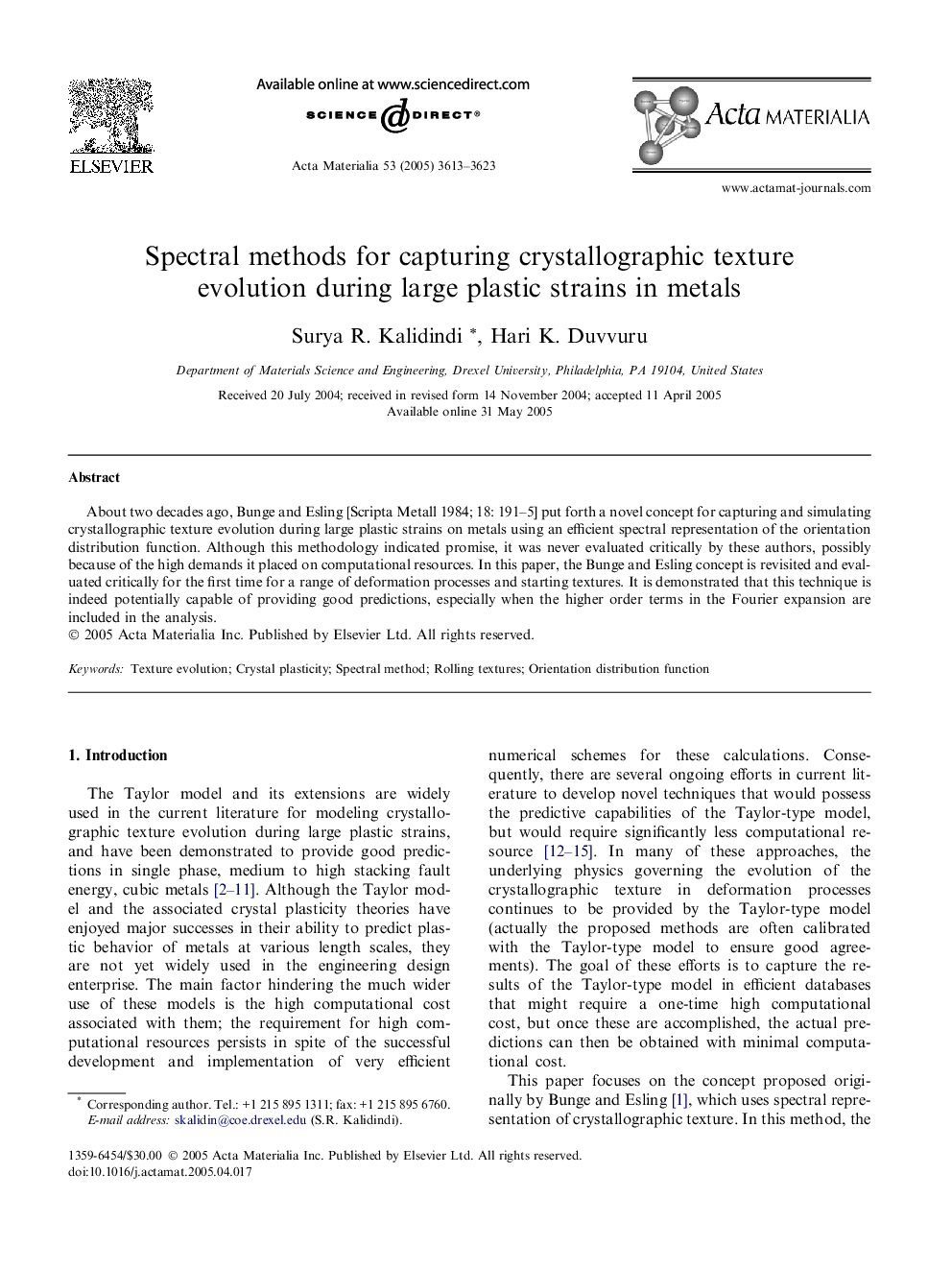| Article ID | Journal | Published Year | Pages | File Type |
|---|---|---|---|---|
| 1451392 | Acta Materialia | 2005 | 11 Pages |
About two decades ago, Bunge and Esling [Scripta Metall 1984; 18: 191–5] put forth a novel concept for capturing and simulating crystallographic texture evolution during large plastic strains on metals using an efficient spectral representation of the orientation distribution function. Although this methodology indicated promise, it was never evaluated critically by these authors, possibly because of the high demands it placed on computational resources. In this paper, the Bunge and Esling concept is revisited and evaluated critically for the first time for a range of deformation processes and starting textures. It is demonstrated that this technique is indeed potentially capable of providing good predictions, especially when the higher order terms in the Fourier expansion are included in the analysis.
